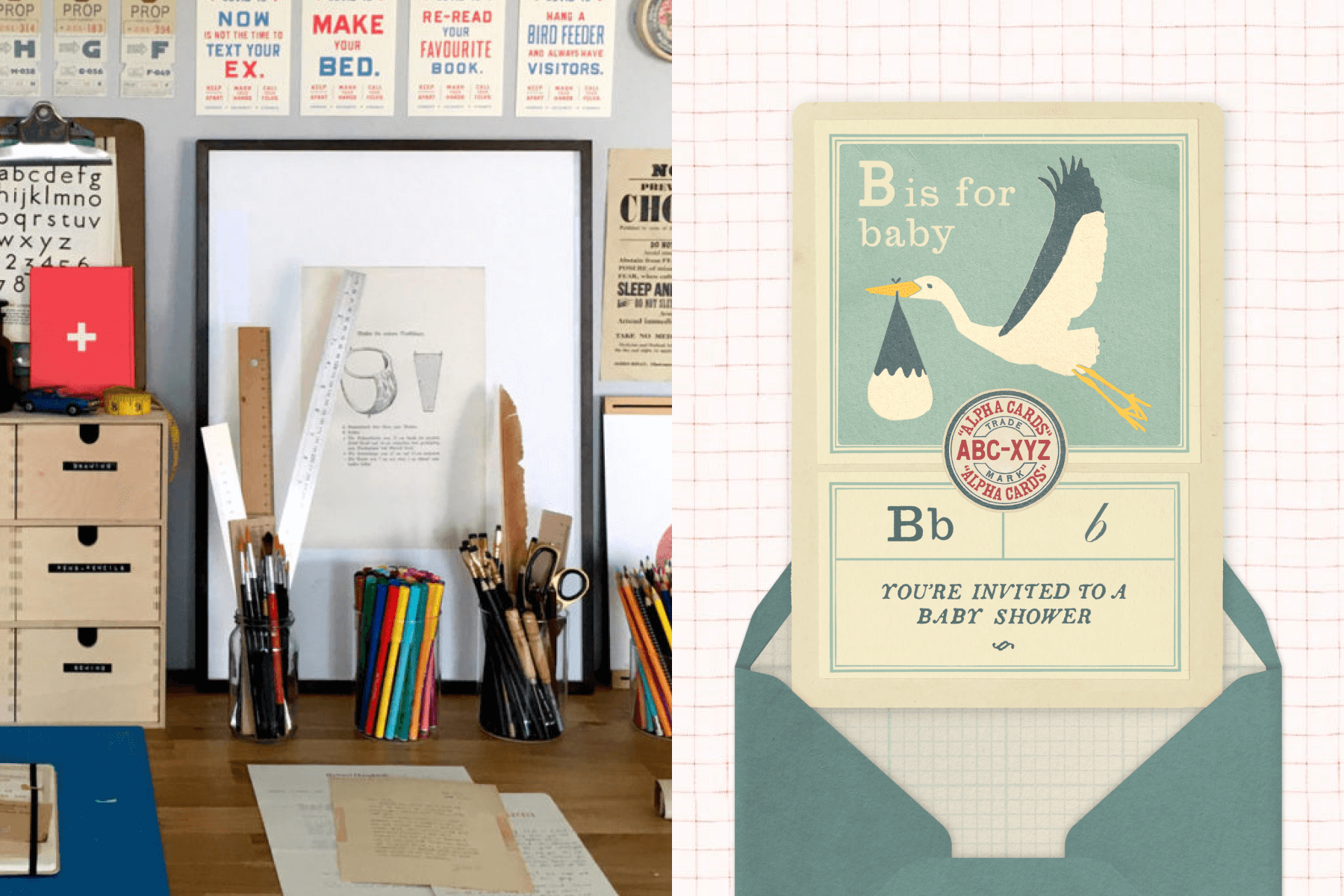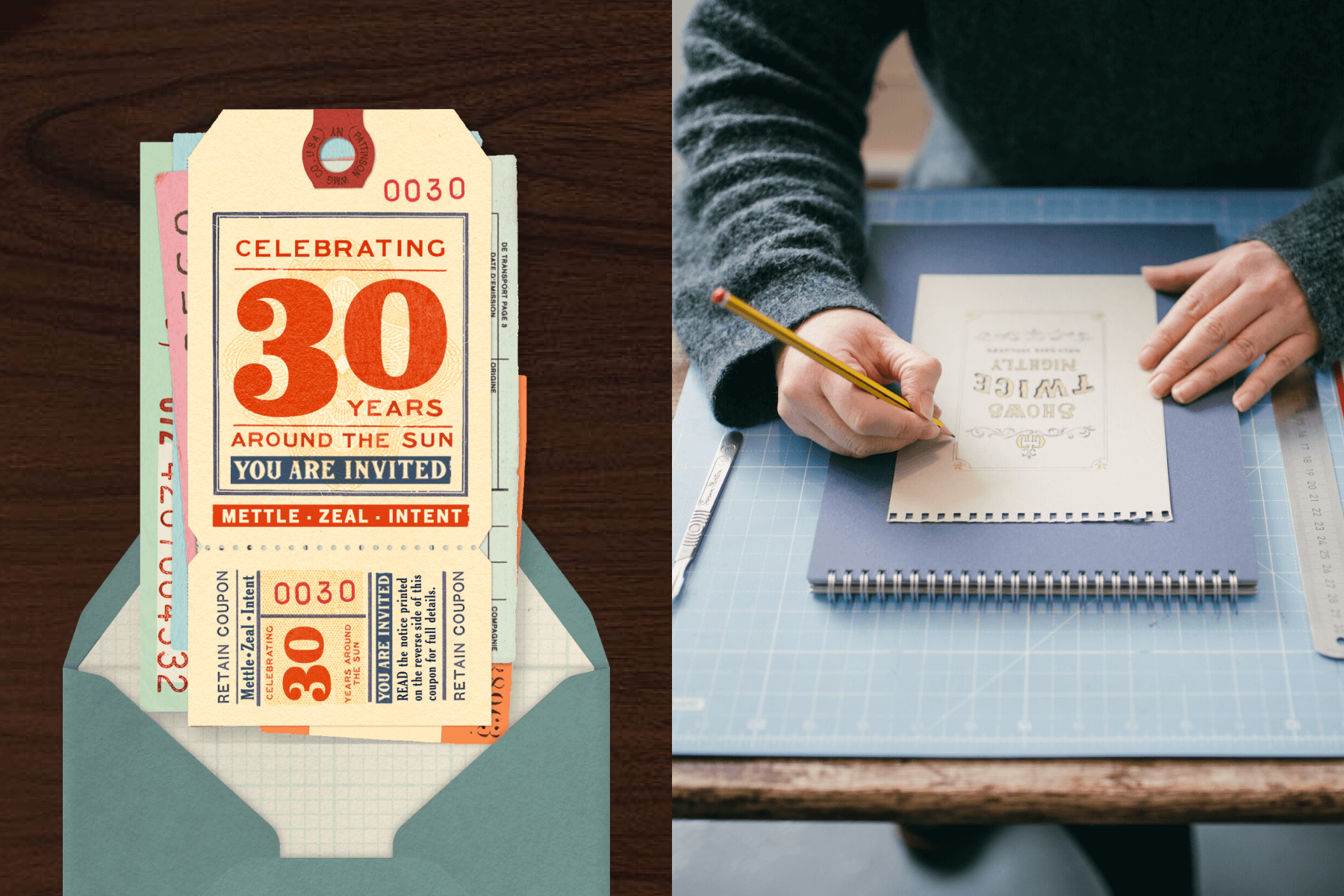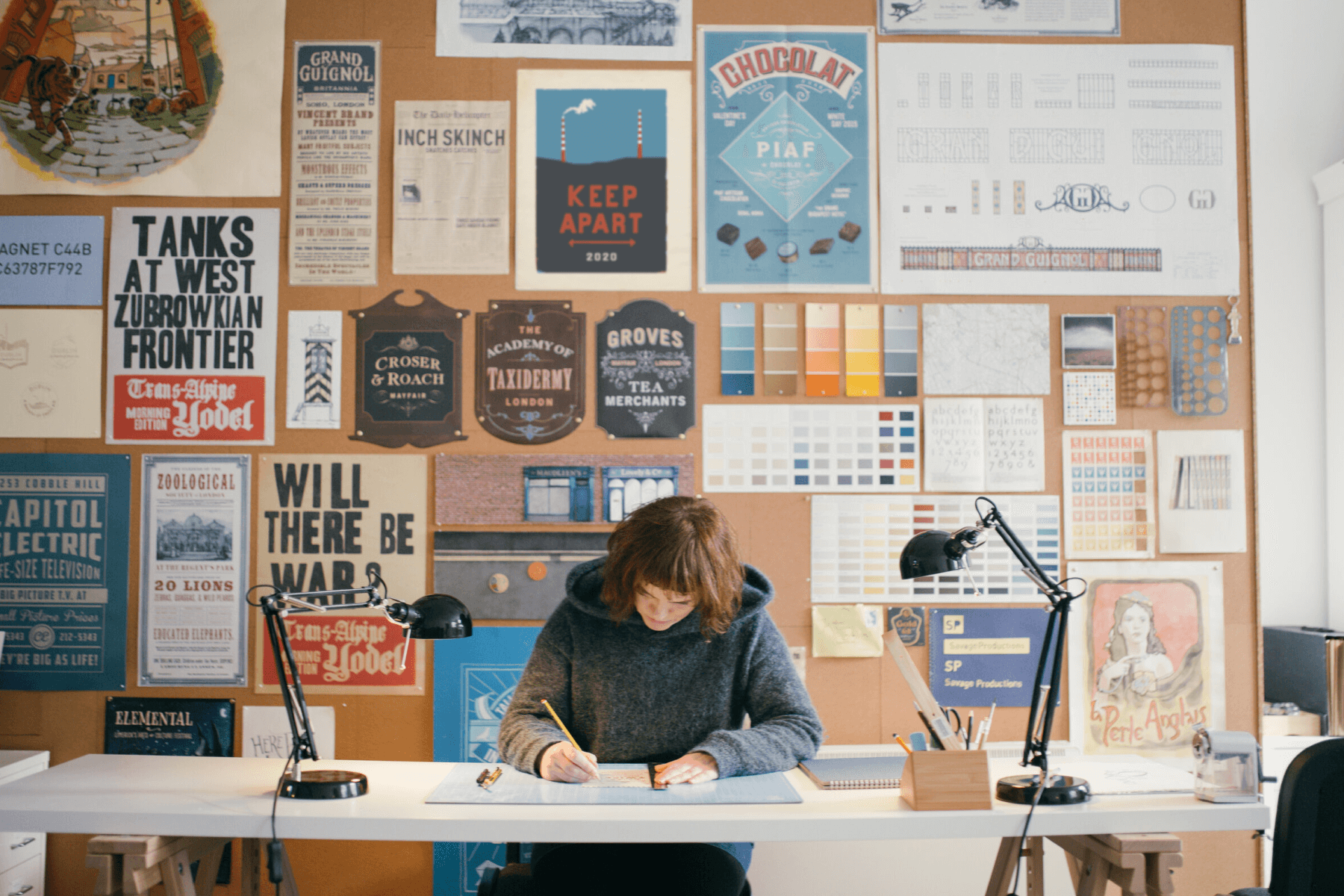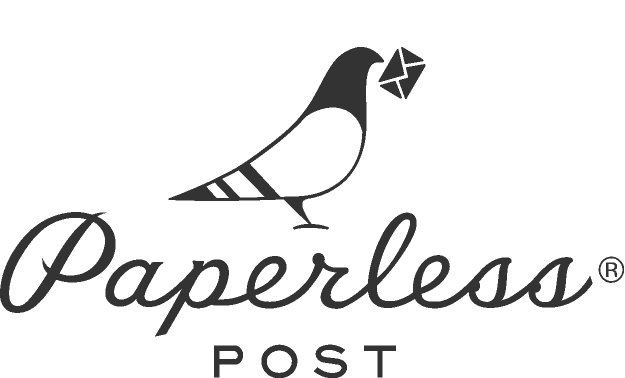That’s the ticket! Introducing ephemera-inspired invitations by Annie Atkins
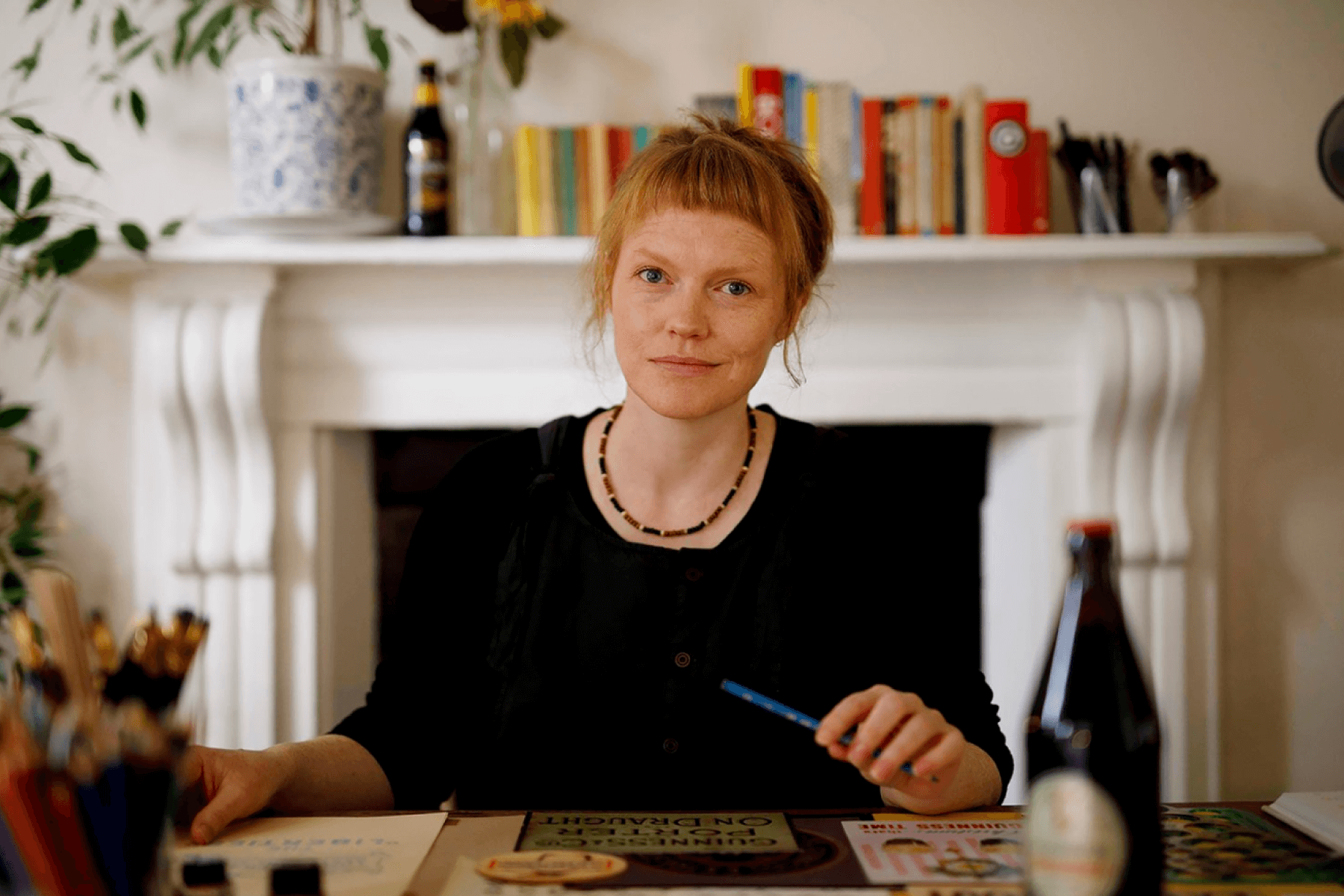
Annie Atkins may not be a household name (yet!), but her work certainly is. The graphic designer is known best for crafting hyper-realistic props—maps, letters, signs—for films by the likes of Wes Anderson (“Isle of Dogs,” “The French Dispatch,” and “The Grand Budapest Hotel” and Steven Spielberg (“West Side Story;” “Bridge of Spies”). Often integral to the plot, her designs are typically seen for a moment at most.
As our newest Paperless Post partner, Atkins’s immense talent finally gets the close-up it deserves. Inspired by vintage and personal ephemera, her invitations—each painstakingly created with hand lettering for a truly authentic, nostalgic feel—are a study in craftsmanship and attention to detail. And it goes without saying: you and your guests can stare at them, in close range, for as long as you please.
These aren’t your typical invitations. From telegrams to luggage tags to bar coasters and marriage licenses, they look straight out of an antique shop or your grandparents’ attic. Enter your own event details into the designs, and there’s a pretty solid chance your party will go down in history, too.
We spoke with Atkins about what inspired her collection for Paperless Post, how she first began collecting, and about planning an “accidentally Wes Anderson” wedding. Read on.

What excites you most about your Paperless Post collection?
I love my work in film design, but the pieces I make for the cinema are seen so fleetingly—sometimes literally only a split second in the blurry background of any given shot. The thought of my designs now arriving directly into inboxes is very satisfying. I’m glad people will have a chance to see these things up close!
What influences went into choosing the designs for your invitations?
I always go straight to real ephemera for my inspiration; it’s the only way to make things feel truly authentic—to study original sources. I looked at 1930s cinema tickets, Victorian invoices, typed letters from Hollywood directors to their cast, old beer mats, luggage tags, dockets from hardware stores… anything that felt like it could inspire a collection of colorful antique invitations.

How do you stay inspired?
I’m always searching for treasure on eBay or Etsy or in flea markets or old bookshops—I have a large collection of ephemera in piles of shoe boxes in my studio. When I first started collecting I was vigilant about archiving everything into photo albums, but now I’m afraid I’ll never catch up. I need to dedicate a week to sorting through it all properly soon!

Have you always been a collector of ephemera?
No, before I worked in film I had no interest in anything antique. I was young, and it was the millennium, and all I was interested in was modern and contemporary styles—whether that was clothing, furniture, or graphic design. Working in period filmmaking gave me a newfound love for art history and vintage design.
Can you remember some of the first things you collected?
The first very old piece of ephemera I bought was a letter from 1791. It’s written on laid paper with a feather quill, and folded and sealed with red wax. I picked it up on eBay for about €20, if I recall. I can’t remember what it says now—it looks like a love letter but I may be being misled by the red seal. It’s probably just someone asking for the shilling they lent to be paid back.

What found item has meant the most to you?
I bought a telegram on eBay some years ago, sent in the 1940s from a man in Scotland to a woman in London. It says, “I hope you’re telling people we’re engaged, darling.” I just feel that this relationship is doomed! Maybe I read the tone wrong, though, and they were both perfectly happy—it’s impossible to say, but it’s a great prompt for imagining a story.
What feeling do you hope hosts and guests will have when they send or receive your invitations?
I hope the collection feels celebratory. We did so much of our socializing on screens over the last several years, so I hope these pieces are another door back into the real, tactile world that we live in, and people will be happy to be invited to celebrate an event with their friends.
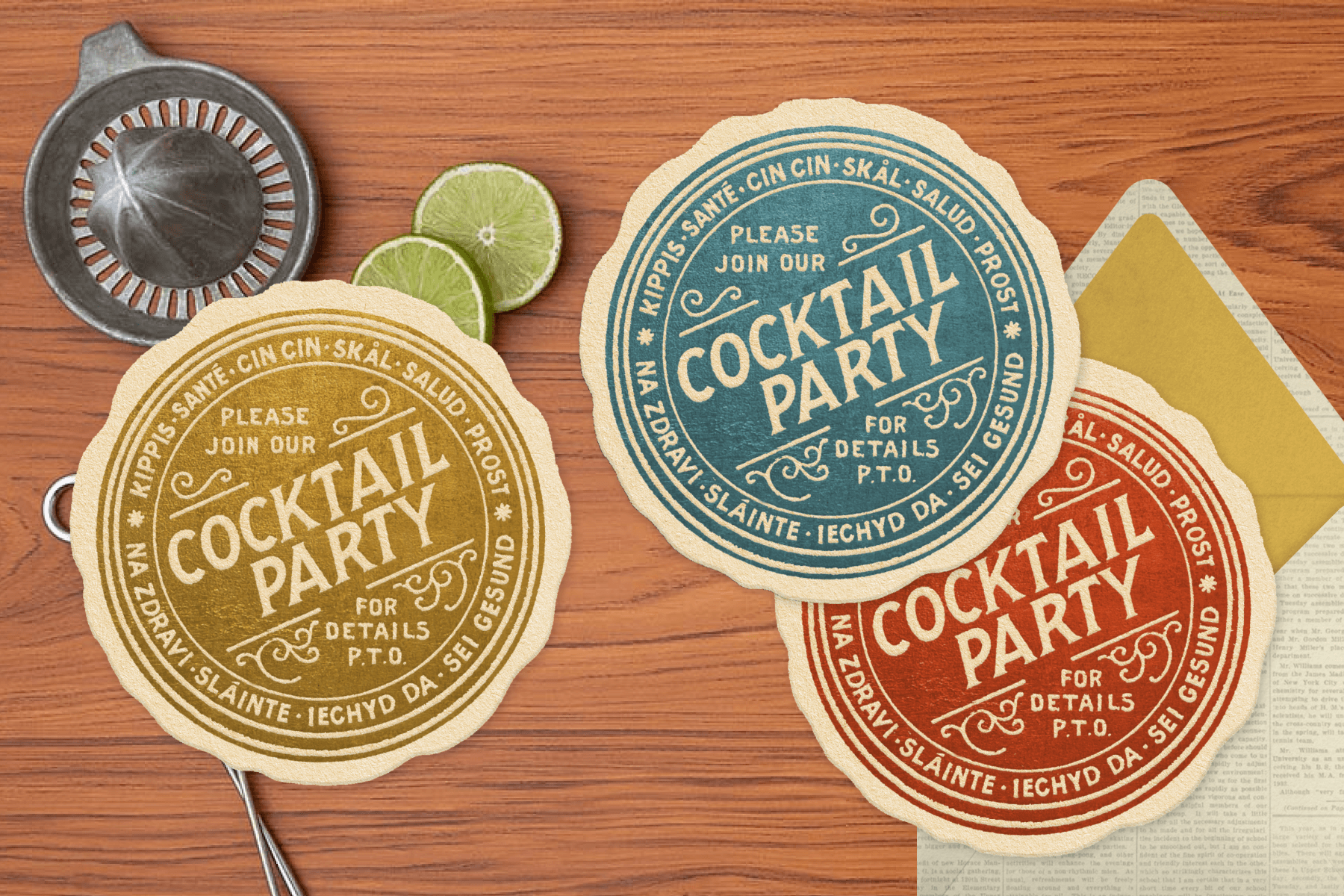
Describe for us your dream event.
My partner and I want to get married next year. We plan to take all our family and friends on a boat from Ireland to Wales with us. We’ll have a cèilidh—a traditional dance with Irish folk music, and a Welsh hedgerow theme for the table dressing, with lots of birds, blackberries, and brambles.
The venue, Portmeirion, is a strange place: it’s a little Italian village that was designed by a mad Welsh architect a hundred years ago. He built it in the cliffs above the estuary for his sweetheart, with all these higgledy-piggledy, brightly colored little buildings. When we visited we couldn’t quite put our finger on what it reminded us of, then it came to us: it’s accidentally Wes Anderson!
Thank you, Annie Atkins! Explore and send her new collection of invitations now.

